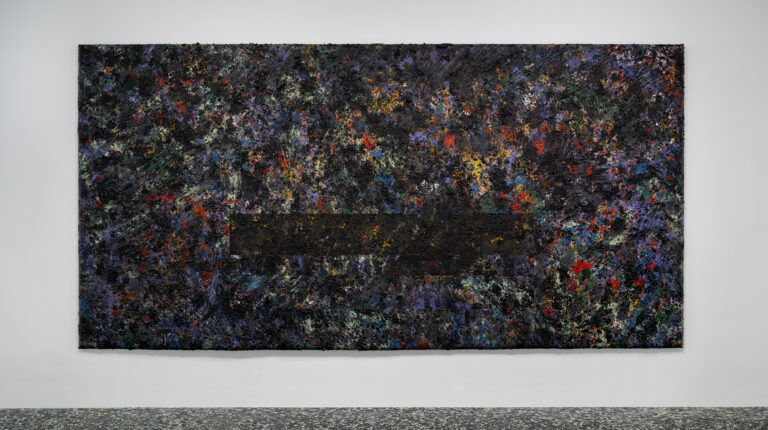Bevelled-edge
In the late 50s and early 60s, Gilliam began experimenting with different techniques and materials, staining and pouring paint and other materials directly onto the canvas while folding and crumpling its wet surface to create variegated compositions with luminous color and depth. He began to work with acrylic on unprimed canvases, later stretched on specially made beveled edge frames. The beveled frame – often as deep as six inches – offered an illusion of flatness that disguised the physical depth of each work. The paintings appeared to float, or emerge from the wall itself, creating a three-dimensional relationship beyond the surface of the canvas, exploring the phenomenology of space.


